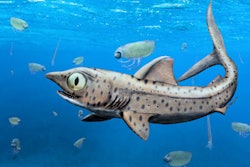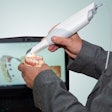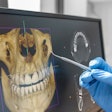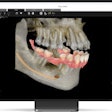Scans of ancient fish revealed that the sensitive inner layer of teeth may have developed from sensory tissues in the protective armor of these fish, which may explain the high sensitivity of today’s teeth. The study was recently published in Nature.
Furthermore, these structures contained dentin and probably helped the animals sense their environment and detect conditions in the surrounding water, the authors wrote.
“When viewed through this evolutionary lens, the fact that teeth in the mouth are extremely sensitive is less of a mystery, and more a reflection of their evolutionary origins within the sensory armour of early vertebrates,” wrote the authors, led by Yara Haridy, PhD, of the University of Chicago Department of Organismal Biology and Anatomy (Nature, May 21, 2025).
The study used high-resolution synchrotron computed microtomography to examine both living and fossilized vertebrate and invertebrate exoskeletons, focusing on the origins and distribution of dentine in Cambrian and Ordovician taxa. Synchrotron scans revealed deep ultrastructural similarities between vertebrate odontodes and sensory structures, with dentine tubules in Eriptychius resembling the sensory sensilla found in invertebrates, they wrote.
Immunofluorescence showed that extant chondrichthyans and teleosts retain extensive innervation in their external odontodes, supporting a sensory role similar to that of teeth. These patterns suggest that dentine initially evolved as a sensory tissue in early vertebrates, with its sensory function retained in modern teeth.
To investigate the vertebrate affinity of Anatolepis, researchers also used high-resolution synchrotron tomography on late-Cambrian fossils, revealing canal structures in their cuticlelike modern arthropod tissues rather than vertebrate dental structures, they wrote.
Although dentin-lined tubules in Eriptychius resembled invertebrate sensilla, they contained dentine and had features indicating sensory capability, including open pulp cavities and large dentine tubules. This evidence suggests that the extreme sensitivity of modern teeth reflects their origins as sensory structures in the protective armor of early vertebrates.
However, this study did not identify the earliest vertebrate fish due to unclear early dental tissue evidence and limited comparative data, making it difficult to determine odontode origins, the authors added.
“An ancestral sensory function of dentine reveals that independent vertebrate dental specializations, or autapomorphies, reflect a shared history,” they wrote.




















